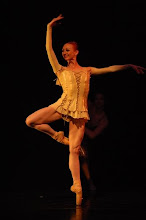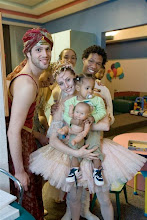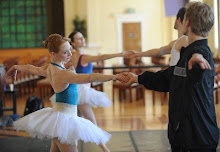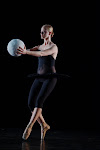As we bring our glorious professional company and creativity to, yet again, a new venue—the grove at Memphis Zoo’s Teton Trek—what better way to celebrate than to connect our thoughts and minds to the natural world around us. Stopping to think about how distinctly valuable and vital the earth is to who we are, how we have been formed and what future we leave to our descendants is imperative, and can help us stop and be grateful for our bountiful surroundings.
With the three choreographers whom I engaged in making these new works based on water, earth and sky, I was most specific with Mikelle Bruzina. Last June, when Ballet Memphis performed at the John F. Kennedy Center for the Performing Arts in Washington, D.C., I happened to take in a startlingly beautiful exhibit at the Renwick Gallery, part of the Smithsonian Museums. The exhibit was called The Art of Gaman and was based on the amazing art that Japanese American citizens made while interred in camps during WWII, two of which were just across the river in Arkansas. While that chapter in our history is a shameful one, what I saw was the indomitable spirit of survival and perhaps even gratitude for the earth around them.
These citizens created impressive work from stones, seeds, pipes, sticks and nearby materials on the ground. It was breathtaking yet poignantly sad and wonderful. The will to survive, to stay grounded and sane, was seen in their engagement in creating beautiful objects from their surroundings. Mikelle’s mother and grandparents were in one of these camps, so her sensitivity and
history were perfect for this project. So, as you see our Hideko born aloft like a bird, think about this: the earth is what grounds us, even as we reach upward in flight for hope, release, light and freedom.
Petr Zahradníček has actually studied meteorology, so the fact that he chose clouds to think about was no surprise. He uses their formation, change and dispersal to express his fear that human beings might realize too late that we must cherish and take care of our earth and its atmosphere. The very breath that gives us life is gently at the base of this abstract and tender work.
Julia Adam looks at water in her own inimitable and interesting way. As water touches us so often, you will see divining, sailing, swimming—and be reminded about how taking a plunge might mean a myriad of different possibilities, both real and metaphorical. As water lays in various pools around us, or flows through our earth, how can we not think of the timeliness of this new work?
Across the Pacific Ocean, the Japanese people are trying to deal with an environmental disaster of huge proportions. The river we live beside has crested to new flood levels, and the sky has been gray and twisted into tornadoes that have damaged huge swaths of land, buildings and lives all around us. Yet we gather together with family and friends to think carefully and enjoy fully the better side of who we can be, dancing again to tell our stories and explore our connections to each other and to our world.
Wednesday, May 11, 2011
Subscribe to:
Posts (Atom)












